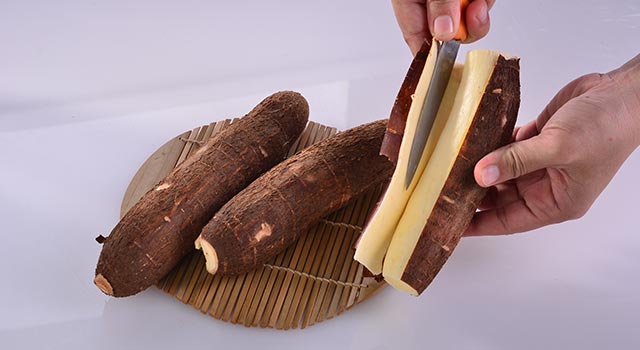Who would have thought cassava peels as tapioca factory waste could be a blessing for dairy farmers on the slopes of Mount Kawi. Studies on the use of cassava peel as feed for dairy cows have been carried out. After testing the nutritional content of produced milk using automatic milk analyzer, it is evident that the use of tapioca waste can increase the fat content, nonfat solids, and total milk solids which determine the price of milk.
From this innovation, farmers can reap profits from the use of cheap cassava peels as the quality of milk is equal to milk produced with expensive commercial feed.
This study and observation were carried out on the slopes of Mount Kawi, which is known as a milk production center in Malang. Most of the dairy farmers there are assisted by PT. Greenfield Indonesia (PTGI), as a community service responsibility(CSR) program. PTGI itself is regarded as one of the best milk producers in the country.
Its products have been marketed in the form of pasteurized milk, UHT milk, mozzarella cheese. Moreover, PTGI is also a supplier of milk to one of the international coffee shops in ASEAN region. So, undoubtedly, PTGI’s expertise in the field of the dairy industry has given motivation and inspiration to farmers in some of the surrounding villages the company assisted.
Initially, farmers started raising cows with grass and concentrates feed systems. The concentrates were obtained from local cooperatives or milk collection centers. The increasing number of livestock makes farmers think hard to anticipate the increasing cost of feed. One of them looked for alternatives and considered industrial waste in the area.
Not far from the residential area, there is a tapioca flour industry. Cassava pulp is commonly used as animal feed as onggok, so it has its price and market share while cassava peels are thrown away.
The farmers began to mix cassava peels with his daily livestock feed. With a simple analogy, cows eat the had cassava with its skin, so the peels must be safe for consumption and it can be consumed in large quantities. The big question that arises is whether the produced milk remains significant and the quality is not reduced.
Observation study was then carried out for 30 days in collaboration with PTGI, between students and researchers at Universitas Airlangga. As a result, nutritionally, the quality of milk is relatively good above the SNI standard. From an economic standpoint it is very profitable because quality milk is produced from cheap feed, cassava peels, the waste of tapioca flour production.
After further investigation, the use of cassava peels as animal feed is considered better than the use of tofu pulp. Tofu waste contains a protein that is difficult to degrade in the rumen because it has undergone coagulation and denaturation during heating in its production process. Thus, it is difficult to convert into ammonia in the rumen, which results in disruption of the growth of normal flora in it.
In contrast to tofu pulp, cassava peels contain lactic acid bacteria and mold, low mycotoxin and nontoxic, low concentration HCN support animal health, by increasing the production of lactoperoxidase and reducing the number of coliform bacteria in milk. (*)
Author: Herinda Pertiwi
Informasi detail dari riset ini dapat dilihat pada tulisan :https://www.researchgate.net/publication/332328075_Nutritional_Evaluation_of_Cassava_Manihot_esculenta_Peels_as_a_Dietary_Supplement_in_Tropical_Friesian_Holstein_Cross_Breed_Dairy_Cattle?_sg=_TmkE-lcAYxSylsCoiPAUj6MiUQGO-CPVElNlbxRnERuf3zVHbnIud1khD4FTfygyPNbYYW_R6fPng.RO9aY8Ku5qMN-fto1MOQBnXoInO_Uwx1m2h-Rl2QGCNp0DHKuGWrvTP0K3l5Ur61m_t6x3jaUQjAiS3TZmjfoA&_sgd%5Bnc%5D=2&_sgd%5Bncwor%5D=0 Ή





